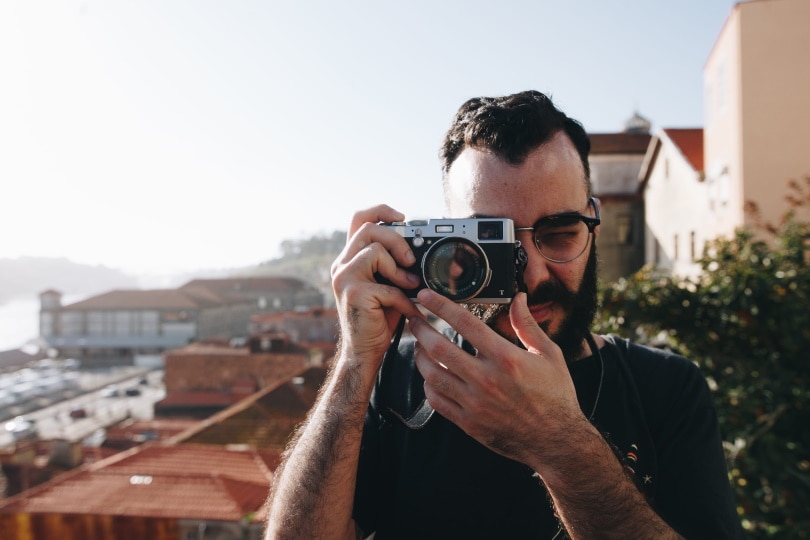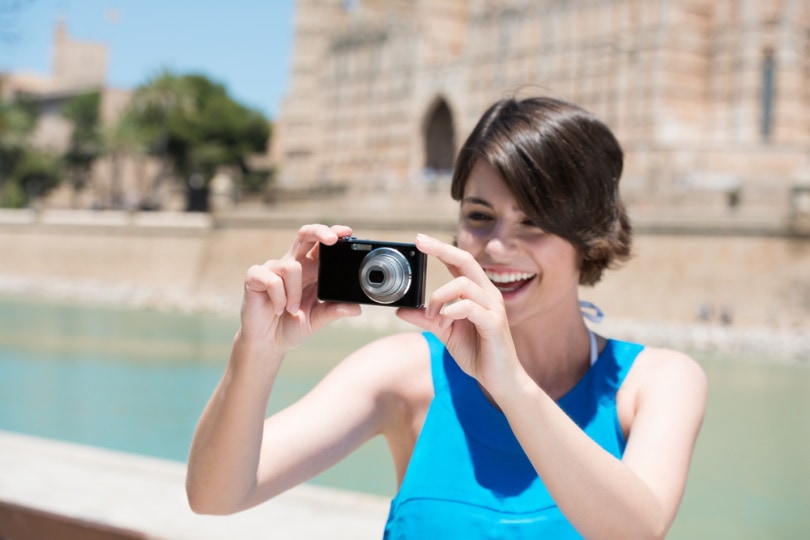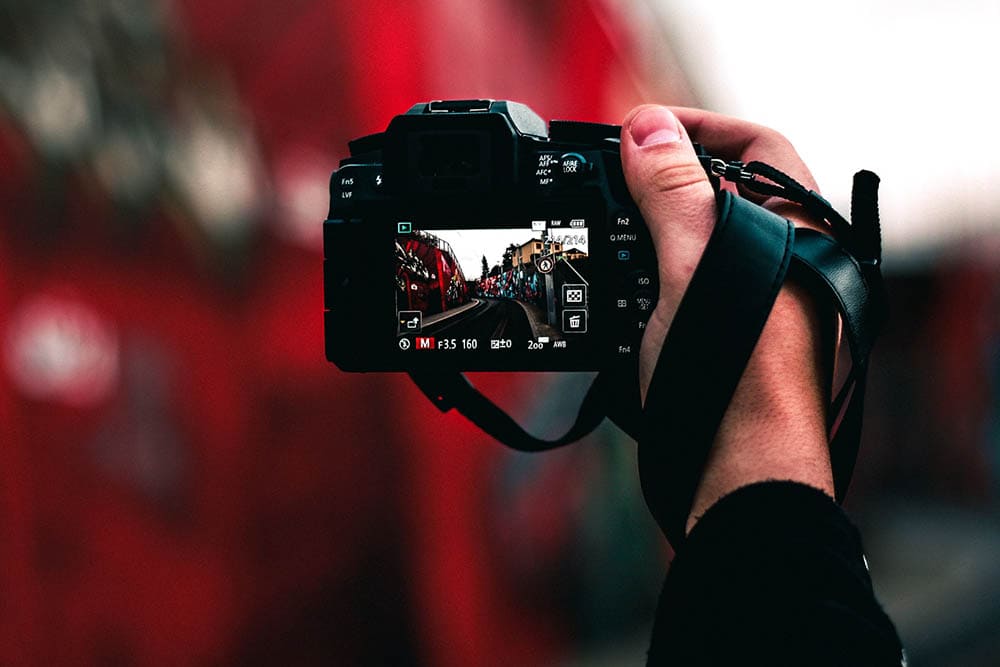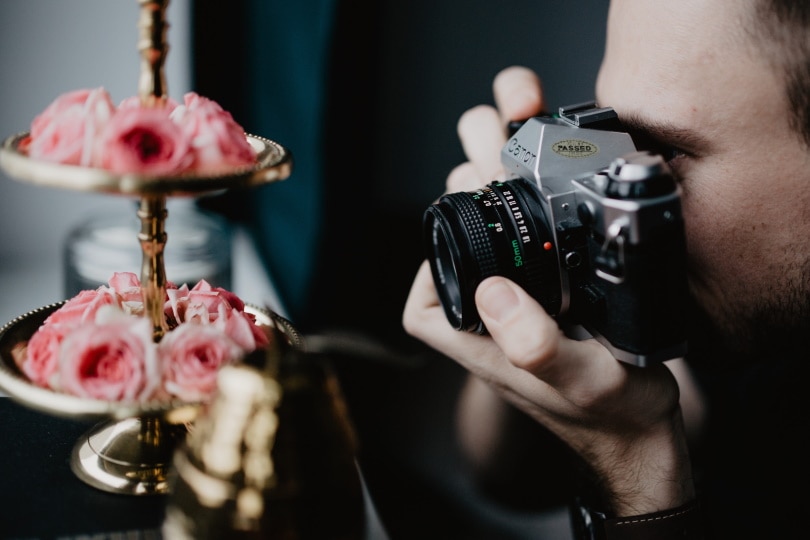What Are the Ideal Outdoor Photography Camera Settings?
Last Updated on

Have you taken your camera outside for a photo session, only to get less-than-ideal results? You’re not alone. While you can take beautiful photos outside, the constantly changing settings can make it a challenge to get everything just right.
We created this guide to help you get the perfect outdoor photos, whether you’re making the changes to the settings yourself or simply want to know the easiest and most effective preset adjustments.

Best Outdoor Photography Camera Settings
If you want to take the perfect pictures outdoors, there are three different settings that you’ll want to adjust. These are the ISO, aperture, and the shutter speed. Here, we break down how you want to set each of them.
ISO
ISO determines how sensitive the pictures are to light, which is a big deal when you’re taking pictures outside! That said, the conditions outside have a large part to play when you’re adjusting this setting.
On bright days, you’ll want a low ISO, typically between 100 and 400, since there is plenty of light for the camera to use in the pictures.
However, if you’re shooting on an overcast day or even at night, you’ll need much higher settings. For night photography, it’s common to use ISO settings between 3,200 and 6,400! Everything else falls somewhere in between, and it’ll take a bit of experimentation and practice on your part to figure out exactly what you need.

Aperture
Aperture, also known as the f-stop, is a critical photography setting that you’ll need to master. When you’re changing the aperture, you’re actually changing the photo’s depth of field. So, when picking an aperture for shooting outdoors, it comes down to the type of picture that you’re taking.
Is it a landscape shot, where you want everything in focus? If so, go with an f-stop between f/8 and f/16. However, if you’re taking an outdoor portrait and you want to keep the focus on the subject and blur out the background, lower the f-stop to something between f/1 and f/4.
Play around with the numbers to see where it shifts the focus. This way, you can get the exact image that you want with everything in or out of focus.
Shutter Speed
The last setting that you’ll need to work with during outdoor photography is the shutter speed. In short, the faster the shutter speed, the better your camera can capture moving objects. So, if you’re trying to capture a picture of a hummingbird and you want a perfect shot of the wings, you’ll need a very fast shutter speed.
For portrait photography, a shutter speed of 200 to 500 is more than enough to keep things crisp. Going with a slow shutter speed can also highlight movement in nature, so you can make hummingbird wings look like they’re moving fast by allowing them to blur out while everything else comes in crystal clear.

The Tradeoffs
You can change the settings all you want, but eventually, there’s going to be a tradeoff. With super-fast shutter speeds, you bring in less light during each exposure, which can lead to a darker image. However, if the shutter speed is too slow, you can flood out the image on extremely bright days.
The best way to understand how these settings work and how they affect each other is to experiment with them.
So, take a few pictures, have fun with it, see what you can create, and learn a few things in the process!
Best Preset Outdoor Photography Camera Settings
While there are manual settings that you can adjust to get the perfect picture, that’s not your only option. Most modern cameras have preset settings that take into account how much light is out there and adjust the ISO, aperture, and shutter speed accordingly.
If you’re sticking with preset settings, the landscape option does a great job outdoors — as long as there’s not much movement and you want everything in focus.
The other option that is great for outdoors is the “automatic” feature that some cameras have. This setting takes in conditions and does its best to give you the perfect settings for that moment. It’s not as fine tuned and crisp as if you do it yourself and get the settings perfect, but for amateurs, it’s usually just fine.

Practice, Practice, Practice!
Some people might tell you not to go overboard when you’re messing with different ISO, aperture, and shutter speed settings. While this advice is sound, the cool thing about digital photography is that if you don’t like a picture, you can delete it and it won’t cost you a dime. Work your way up with different camera settings so you can see what each one does, find the ideal setting, and see what happens when you do go overboard.
Don’t forget to go out and experiment in different environments to see how more or less lighting, shade, and other factors affect each setting.
That way, you know exactly what each setting does and how to use it to get the picture that you want!


Final Thoughts
The outdoors can be a more challenging environment, but there’s no doubt that some of the most beautiful scenes, backdrops, and images have been taken outside.
So, get out there and take a few pictures! You’ll capture the dream photographs that you’re thinking about in no time and learn quite a bit along the way.
Featured Image Credit By: Piqsels
About the Author Robert Sparks
Robert’s obsession with all things optical started early in life, when his optician father would bring home prototypes for Robert to play with. Nowadays, Robert is dedicated to helping others find the right optics for their needs. His hobbies include astronomy, astrophysics, and model building. Originally from Newark, NJ, he resides in Santa Fe, New Mexico, where the nighttime skies are filled with glittering stars.
Related Articles:
How to Clean a Refractor Telescope: Step-by-Step Guide
How to Clean a Telescope Eyepiece: Step-by-Step Guide
How to Clean a Rifle Scope: 8 Expert Tips
Monocular vs Telescope: Differences Explained (With Pictures)
What Is a Monocular Used For? 8 Common Functions
How to Clean a Telescope Mirror: 8 Expert Tips
Brightfield vs Phase Contrast Microscopy: The Differences Explained
SkyCamHD Drone Review: Pros, Cons, FAQ, & Verdict
